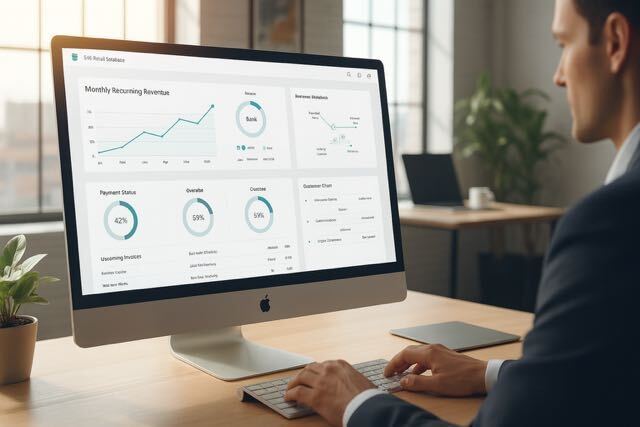The 4 Most Common (And Costly) Errors Found in Proposals and How to Avoid Them

It takes both talent and skill to cleverly sell a product or service on paper.
You might be offering the best product or service in the market, and yet, you might be losing out to competition. More often than not, it is not about your product or service quality, but about the customer service, the response time, and the way you provide information (read proposals and other sales documents) to the customer.
Getting proposals rejected can be frustrating, particularly when sales teams spend a lot of time writing them. While typos or pricing errors can be embarrassing, an incorrect scope of work can wreck revenues and project outlines.
What sets apart a good proposal?
When it comes to writing proposals to numerous prospects, it is a common practice to copy-paste from one business template to another.
But what happens when you copy a paragraph from client X’s business proposal to client Y’s proposal, without changing X to Y? Apart from the proposal being disregarded, it will make the prospect feel awful to get a proposal format that does not address his problem.
This makes it all-important to double-check names or create a process where you get someone else to edit or spot the typos in the proposal. A ‘clean’ proposal format is always appreciated, irrespective of the prospect’s buying decisions.
Another important thing that sets a good proposal apart – How well it showcases the value that you are going to create for the prospect.
The proposal has to describe the “value” that the prospect will benefit from when buying your product or service in the simplest way possible, maybe using things like an assessment matrix and pricing tables.
Sales teams have to understand client needs and evaluate the requirements reasonably. This will largely help them to successfully add or create that value, eventually creating a compelling, error-free sales proposal.
Four most common mistakes in proposal writing, and how you can fix them:
Making the business proposal format too much about you
A “we” proposal is a common slip up in proposal writing.
More than the company’s history and other accomplishments, prospects want to know how the product or service is going to cater to their needs.
The prospects usually would like to understand how your product or service blends with their business processes, enabling them to achieve their goals.
Rather than letting the prospects guess why they need to do business with your company, the proposal must illustrate how the company is key to their success.
One of the best ways to do that is to let your customers know that you understand their pain points and provide the solution using separate sections for problems and solutions.
Pro Tip: After writing the proposal, hit CTRL+F to count the number of times the word “we” is written. Compare it with the number of times the client’s name is mentioned. If there are more we’s than you’s, relook at what you are about to send.
Failing to lay down the client’s ROI
Adding a section in the proposal that explains the client’s return on their investment will give you an edge over competition. Doing so also makes the company more trustworthy.
Talking about ROI involves providing financial facts - financial facts that successfully describe how a product or service will significantly bring value and benefits that outrun the cost of buying it.
Pro Tip: Dive into deeper research about the prospect’s business and industry. This would give you access to a lot of benchmarks and numbers that are prevalent in your client’s business. The data can then be used to show how your product or service would make a difference to them.
Spend some extra time to do the ROI study!
Ignoring the use of images and infographics
Black and white proposals are boring, when was the last time you read an editorial in your local newspaper? Most people prefer to scan through the document, except legal teams of course.
Images sell better because they help grab attention and stay in the mind of the viewer for long. The more a prospect can remember about a company’s proposal and understand it, the more likely they are to choose the business over their competition.
Using images and infographics in a business pitch isn’t all about vanity – it is about how the sales team chooses to present the company and the value it produces. Try and represent the problem and your solution in a way that your prospects would understand and remember.
Pro Tip: Get a graphic designer to work with the bid team.
Failing to highlight why the product or service is better than the competition
Talking about why customers should choose you over the competition may seem self-evident. However, many businesses spend too much time focusing on day-to-day activities and promoting the greatness of their product or company and fail to look at the big picture(read your customers’ goals).
The most effective business proposal connects to a potential customer on an emotional level. It addresses their needs and challenges, and how the company can solve a problem for them. Focusing on competitive advantage in a proposal makes the prospect believe that you are customer-centric.
Why is your product or service better than that of Competitors?
Rather than simply describing services or products, compare your product or service to similar offerings in the market. This makes the information both appealing and retainable. List the awards received for your product or service. Tactically make a listing of client references that trust you over competition.
Pro Tip: Identify the robust benefits of your product or service that you offer but competitors don’t (better quality, faster, cheaper, etc.). These details have to be things the prospect really cares about. Use infographics for comparison.
Follow-up
Another expensive error that sales teams tend to make (often owing to tight schedules and deadlines) is forgetting to follow-up with the prospect after sending the proposal.
If the client likes the proposal, he or she is likely to sign the deal. When a prospect is taking time to make a decision, check in with them. If they have amendments or additional questions that need to be clarified, make sure that you're able to incorporate them.
A good follow up process is as important as a good proposal and product/service.
Experience the power of our product firsthand with a free demo. Book now!





.png)









